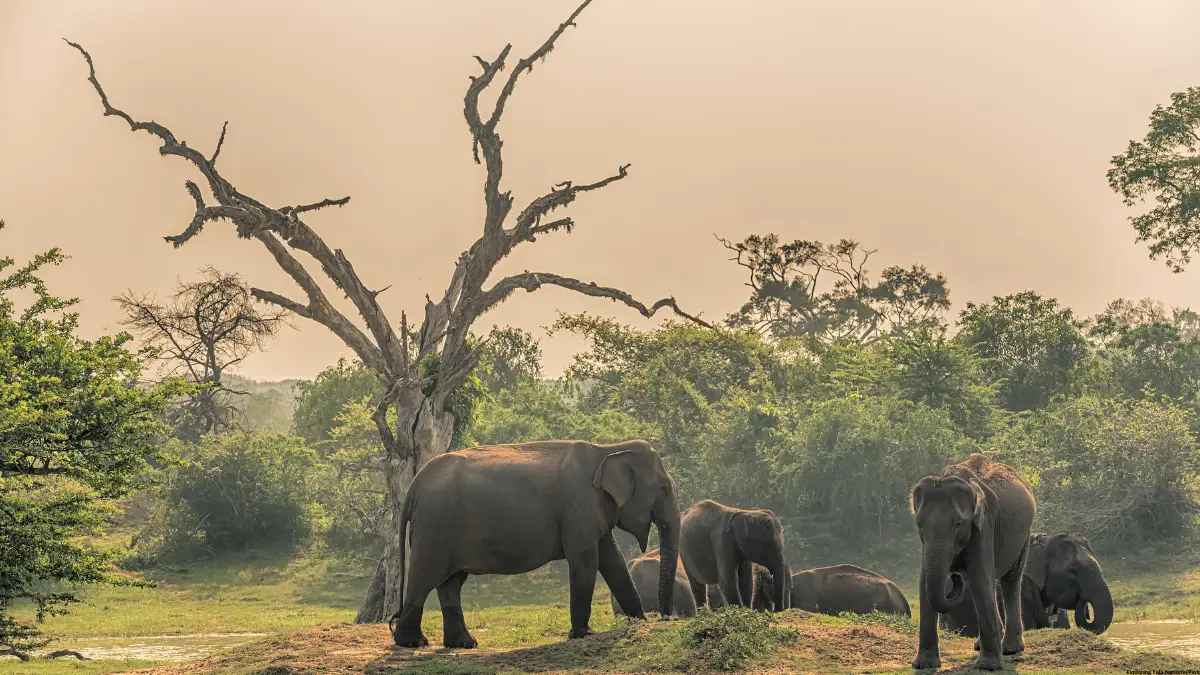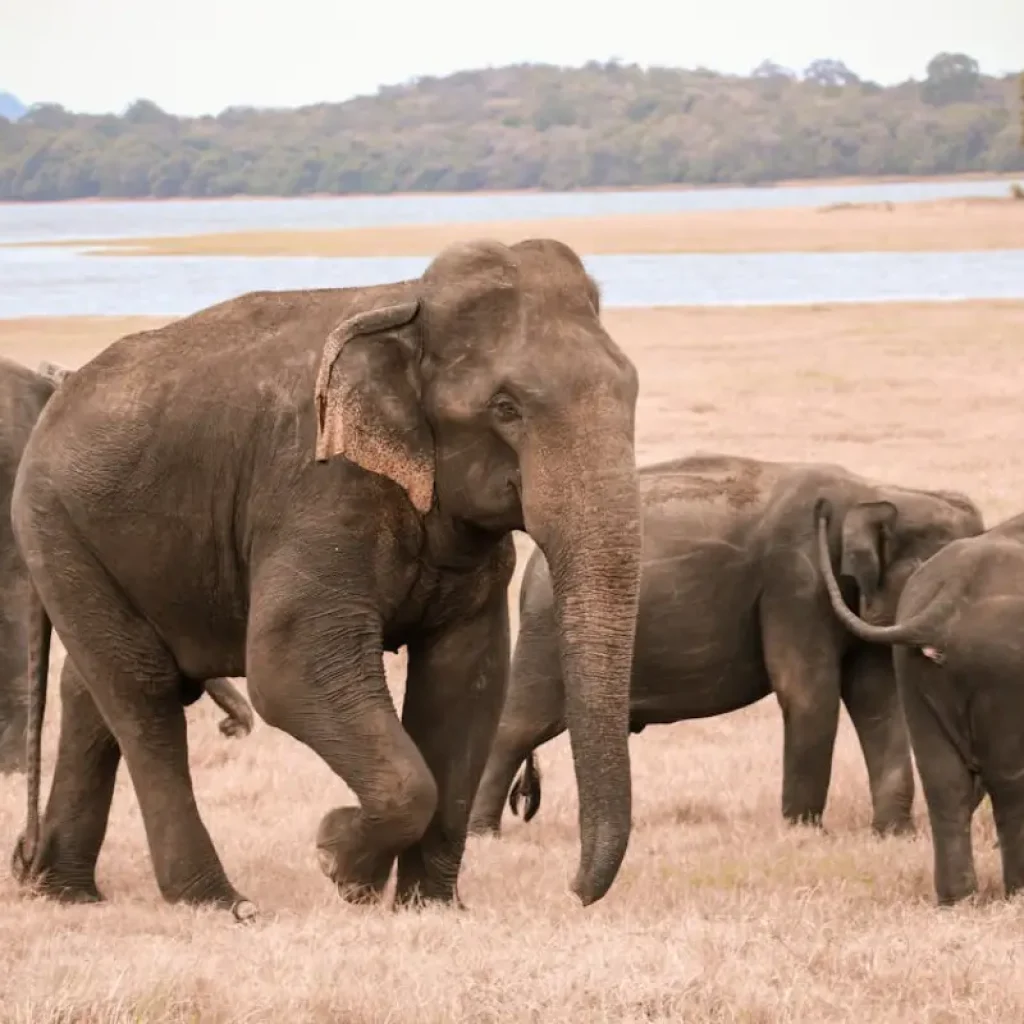Exploring Yala National Park: A Wildlife Haven in Sri Lanka

Yala National Park is a treasure trove of natural beauty and wildlife, situated in the southeastern region of Sri Lanka. As one of the country’s most famous and oldest national parks, Yala offers an unparalleled experience for nature enthusiasts, wildlife photographers, and anyone looking to witness Sri Lanka’s diverse flora and fauna in their natural habitat. This article delves into the wonders of Yala National Park, including its history, the wildlife it shelters, the best time to visit, and tips for an unforgettable safari experience.
Introduction to Yala National Park
Established in 1900 as a wildlife sanctuary and declared a national park in 1938, Yala National Park spans nearly 979 square kilometers (378 square miles), making it the second-largest national park in Sri Lanka. The park is divided into five blocks, with Block 1 being the most frequently visited due to its rich wildlife and easy accessibility. Yala’s diverse landscape, which includes dense jungles, grasslands, lagoons, and coastal stretches, provides the perfect backdrop for a thriving ecosystem.
Yala’s history is as rich as its biodiversity. It was originally a hunting ground during the British colonial era, but today, it’s a sanctuary for wildlife conservation and a top tourist destination. The park’s variety of habitats supports a wide array of species, making it a premier destination for wildlife safaris.
The Unique Biodiversity of Yala

Yala National Park is home to one of the highest concentrations of wildlife in Asia. Its diverse ecosystem includes a mix of dry monsoon forests, mangroves, grasslands, and wetlands, supporting a wide range of animal and plant species.
Wildlife
Yala is renowned for its abundant wildlife, including 44 species of mammals, over 200 bird species, and a variety of reptiles and amphibians. The park is most famous for its leopards, earning it the reputation of having the highest density of leopards in the world. The elusive Sri Lankan leopard, an endemic subspecies, is one of the park’s star attractions.
Sri Lankan Leopard: The Yala leopard (Panthera pardus kotiya) is the apex predator of the park, and sightings are relatively common compared to other places. These majestic creatures can often be seen lounging on tree branches, prowling in the grasslands, or resting near waterholes.
Elephants: The park is home to a significant population of Sri Lankan elephants. These gentle giants can be spotted roaming in herds, especially around water sources during the dry season.
Sloth Bears: Another highlight of Yala is the rare Sri Lankan sloth bear. Though elusive, these shaggy-furred mammals are often spotted foraging for fruits and honey.
Birds: Birdwatchers will be thrilled by the diversity of avian species in Yala. The park hosts an array of resident and migratory birds, including the painted stork, grey heron, black-necked stork, and the endemic Sri Lankan junglefowl.
Other Mammals: In addition to the big names, Yala is home to spotted deer, sambar deer, wild boar, buffalo, and more. Reptiles such as crocodiles, monitor lizards, and a variety of snakes are also commonly seen.
Flora
The flora in Yala is as varied as its fauna, with dry zone vegetation dominating the landscape. The park features a blend of grasslands, forests, and coastal vegetation. Iconic flora includes the Palu tree (Manilkara hexandra), which provides food for many animals, and the Kumbuk tree (Terminalia arjuna), often found along water bodies. The coastal areas are fringed with mangroves and salt-tolerant vegetation, contributing to the park’s ecological diversity.
Best Time to Visit Yala National Park
The ideal time to visit Yala National Park is between February and July, when water levels are low, and animals are more likely to gather around waterholes, making them easier to spot. The dry season ensures clear skies and better visibility for safaris. However, each season offers a unique experience:
Dry Season (February to July): This is the best time for wildlife sightings, especially leopards and elephants, as animals frequent water sources.
Monsoon Season (October to January): The monsoon season brings lush greenery, full waterholes, and the arrival of migratory birds. However, some parts of the park may be closed due to heavy rainfall.
Post-Monsoon Season (August to September): The park begins to dry up after the monsoons, and wildlife viewing becomes more consistent.
Best Time to Visit Yala National Park
The ideal time to visit Yala National Park is between February and July, when water levels are low, and animals are more likely to gather around waterholes, making them easier to spot. The dry season ensures clear skies and better visibility for safaris. However, each season offers a unique experience:
Dry Season (February to July): This is the best time for wildlife sightings, especially leopards and elephants, as animals frequent water sources.
Monsoon Season (October to January): The monsoon season brings lush greenery, full waterholes, and the arrival of migratory birds. However, some parts of the park may be closed due to heavy rainfall.
Post-Monsoon Season (August to September): The park begins to dry up after the monsoons, and wildlife viewing becomes more consistent.
Safari Experience in Yala
A safari in Yala is the highlight of any visit to the park. The thrill of exploring the wilderness, combined with the chance to see some of the world’s most elusive animals, makes for a memorable adventure.
Guided Jeep Safaris
The most popular way to explore Yala is through guided jeep safaris. Visitors can opt for a half-day or full-day safari, typically starting early in the morning or late in the afternoon, as these are the best times to spot wildlife.
Morning Safari: Begins around 5:30 AM and ends by 10:00 AM. The cool morning air increases the chances of seeing active predators, like leopards and sloth bears, as well as a variety of bird species.
Afternoon Safari: Starts around 2:30 PM and continues until 6:00 PM. The afternoon safaris are ideal for spotting elephants, deer, and other animals as they gather at waterholes.
Tips for a Successful Safari
- Choose the Right Guide: Opt for an experienced and knowledgeable guide who can provide insights into the wildlife and increase the chances of sightings.
- Bring Binoculars: Essential for birdwatching and spotting animals from a distance.
- Wear Neutral Colors: Earthy tones like green, brown, and beige help blend with the surroundings and avoid startling animals.
- Pack Essentials: Sunscreen, hats, comfortable clothing, insect repellent, and a good camera are must-haves.
Other Attractions in and Around Yala
Beyond the wildlife safaris, Yala National Park and its surroundings offer several attractions worth exploring:
Kumana National Park
Often considered the birdwatcher’s paradise, Kumana National Park, located adjacent to Yala, is famous for its birdlife. It hosts a wide range of migratory birds, especially during the breeding season. The Kumana Bird Sanctuary within the park is a must-visit for avian enthusiasts.
Sithulpawwa Rock Temple
A short distance from Yala lies the ancient Sithulpawwa Rock Temple, dating back over 2,000 years. This historic Buddhist monastery, perched on a rocky outcrop, offers breathtaking views of the surrounding wilderness. It’s an ideal spot for a cultural exploration amidst the natural beauty.
Yala Beach and Coastal Areas
The park’s coastline, which extends to the Indian Ocean, offers serene beaches and coastal scenery. Though swimming is not allowed due to safety concerns, the coastal areas provide picturesque landscapes and are ideal for relaxing after a safari.
Lunugamvehera National Park
Part of the Yala ecosystem, Lunugamvehera National Park is another fantastic destination for wildlife enthusiasts. It acts as a corridor for elephants migrating between Yala and Udawalawe National Parks and is home to a variety of other species.
Conservation Efforts in Yala National Park
Yala’s conservation story is one of hope and challenges. While the park remains a significant conservation area for Sri Lankan wildlife, it faces threats like human-wildlife conflicts, illegal poaching, and habitat destruction. In response, the Sri Lankan government and several conservation organizations have implemented measures to protect the park’s delicate ecosystem.
- Anti-Poaching Measures: Increased patrolling and surveillance to prevent illegal hunting and logging.
- Habitat Restoration: Efforts to restore degraded areas and preserve key habitats, including reforestation initiatives.
- Community Involvement: Engaging local communities in conservation through awareness programs, eco-tourism, and alternative livelihood projects.
Responsible Tourism in Yala
As Yala National Park becomes a sought-after destination, it’s crucial for visitors to practice responsible tourism to preserve the park’s natural beauty. Here are a few guidelines for eco-conscious travelers:
- Follow Park Rules: Stick to designated paths, avoid feeding animals, and never leave litter behind.
- Support Eco-Friendly Operators: Choose safari operators who prioritize sustainable practices and have a commitment to wildlife conservation.
- Limit Noise: Keep noise levels down during safaris to avoid disturbing the wildlife.
- Respect Wildlife: Maintain a safe distance from animals and avoid any attempts to provoke or approach them.
How to Get to Yala National Park
Yala National Park is easily accessible from several major cities in Sri Lanka:
- From Colombo: The drive to Yala takes about 6-7 hours via the Southern Expressway.
- From Galle: The journey from Galle to Yala is approximately 4 hours by car.
- From Ella: Yala is around 2.5 to 3 hours from the hill town of Ella, making it a convenient stop for travelers exploring Sri Lanka’s central highlands.
Conclusion
Yala National Park is more than just a destination; it’s a gateway to the untamed beauty of Sri Lanka’s wilderness. With its incredible biodiversity, diverse landscapes, and unique cultural sites, Yala offers an experience that caters to adventure seekers, nature lovers, and those looking to connect with the island’s rich wildlife heritage. The thrill of spotting a leopard in the wild, witnessing herds of elephants, or observing the serene beauty of a colorful bird is an adventure that leaves a lasting impression on every visitor.
While Yala has become a popular tourist hotspot, responsible tourism practices are essential to preserving its beauty for future generations. Whether it’s through supporting conservation initiatives, choosing eco-friendly accommodations, or simply respecting the park’s natural inhabitants, each visitor plays a role in ensuring the longevity of this incredible sanctuary.